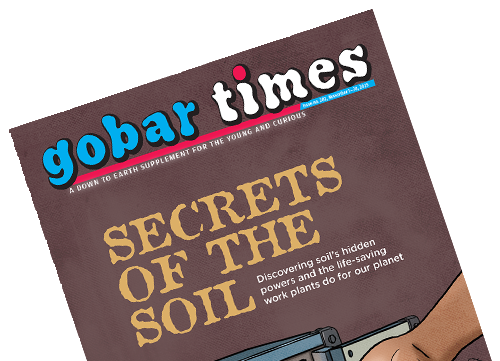
Summarizing the Union Budget in a cool, simplified, less dreadful, more interesting, nowhere mind-boggling, and in quite a thought-provoking manner. *********************************** 11am, 1st February: a moment for which people across the country wait anxiously every year. Why?...

Trees are indispensable for our survival. We rely on them for fuel, fodder, medicine, and innumerable other necessities. They make our planet conducive for life. According to a research published by Nature Climate Change, the world’s forests sequestered about twice as much carbon dioxide as they emitted between 2001 and 2019, thus playing a critical role in mitigating climate change. Therefore, keeping in mind the saying, van se vayu, vayu se aayu (air from forests, life from air), planting saplings is very important for conserving our environment...

What we decide to do today is bound to have an impact on our tomorrow. Therefore, it is up to us to determine the kind of world we want to develop for our future and leave behind for our next generation. We are already witnessing manifold consequences of rising global warming and climate change in the form of extreme weather events. Think about droughts, floods, forest fires, and many such catastrophes. We all are aware that increasing carbon emissions are largely responsible for disturbing our climate...

Environment is not only about trees and tigers; it incorporates a variety of other concerns and subjects such as air, water, food, proper management of waste, etc. In addition to all these, energy is another area which is of vital importance for us...

A vow from an environmentalist to pledge his duty to preserve Mother Earth. *********************************************** If I was the editor of Gobar Times, I would appreciate and highlight all those people in my magazine who try to keep our environment clean. This would include people who save and plant trees and conduct public programmes to spread awareness about environmental issues...

We’ve all seen many science fiction movies about a time machine that allows us to rewind into the past and even fast-forward into the future. But we’ve all wondered if this would ever become a reality. Nonetheless, what if someone tells you that it is indeed possible! Would you believe it? If it helps the predicament, then one such claimant is NASA—the National Aeronautical Space Agency of the USA...
.png)
Global CO2 emissions need to drop to net zero by 2050 to limit the temperature rise to 1.5 degree Celsius above pre-industrial levels. Since fossil fuels account for 80% of global energy consumption and 75% of greenhouse gas emissions, countries are transitioning to cleaner energy systems like renewables and promoting energy efficiency...

Wetlands purify water through natural processes where aquatic plants act as bio-filters. Plants absorb phosphates and nitrates from the water and roots help to put back oxygen into the water. Constructed wetlands are a cost-effective method of treating wastewater and polluted water bodies. These are low cost solutions and can be easily made or replicated.

Millions of years of evolution . . . replicated in an instant!

